Strength and Ultrasonic Testing of Acrylic Foam Adhesive Tape
Abstract
:1. Introduction
2. Research
2.1. Research Procedure
2.2. Materials and Methods
2.3. Ultrasonic Apparatus
3. Results
4. Conclusions
Author Contributions
Funding
Institutional Review Board Statement
Informed Consent Statement
Data Availability Statement
Conflicts of Interest
Appendix A
| No. | HI % | HII % | HIII % | HIV % | HV % | HVI % | HVII % | HVIII % | HIX % | HX % | HXI % |
|---|---|---|---|---|---|---|---|---|---|---|---|
| 80 | 68 | 58 | 43 | 34 | 24 | 23 | 19 | 18 | 17 | 14 | 80 |
| 80 | 68 | 58 | 43 | 35 | 33 | 28 | 26 | 22 | 14 | 9 | 80 |
| 80 | 68 | 55 | 45 | 33 | 30 | 32 | 24 | 17 | 16 | 8 | 80 |
| 80 | 69 | 55 | 42 | 36 | 31 | 29 | 22 | 19 | 18 | 9 | 80 |
| 80 | 69 | 55 | 43 | 36 | 27 | 25 | 23 | 22 | 16 | 13 | 80 |
| 80 | 68 | 57 | 48 | 37 | 29 | 33 | 25 | 17 | 16 | 13 | 80 |
| 80 | 69 | 56 | 43 | 34 | 27 | 31 | 21 | 19 | 14 | 13 | 80 |
| 80 | 70 | 57 | 42 | 35 | 30 | 33 | 21 | 18 | 17 | 5 | 80 |
| 80 | 69 | 56 | 47 | 36 | 28 | 31 | 19 | 18 | 13 | 9 | 80 |
| 80 | 68 | 57 | 43 | 33 | 31 | 29 | 28 | 20 | 14 | 13 | 80 |
| 80 | 71 | 57 | 44 | 34 | 28 | 32 | 22 | 22 | 15 | 10 | 80 |
| 80 | 67 | 58 | 46 | 34 | 29 | 32 | 26 | 18 | 19 | 9 | 80 |
| 80 | 68 | 57 | 43 | 36 | 30 | 33 | 22 | 21 | 14 | 8 | 80 |
| 80 | 72 | 56 | 48 | 33 | 28 | 28 | 22 | 20 | 17 | 10 | 80 |
| 80 | 70 | 57 | 44 | 33 | 31 | 26 | 21 | 22 | 13 | 13 | 80 |
| 80 | 73 | 56 | 45 | 33 | 30 | 31 | 25 | 20 | 17 | 10 | 80 |
| 80 | 69 | 56 | 45 | 36 | 31 | 26 | 23 | 20 | 14 | 9 | 80 |
| 80 | 69 | 58 | 44 | 34 | 28 | 31 | 18 | 21 | 13 | 11 | 80 |
| 80 | 70 | 56 | 43 | 36 | 30 | 25 | 22 | 18 | 16 | 10 | 80 |
| 80 | 69 | 58 | 45 | 34 | 26 | 32 | 23 | 19 | 15 | 7 | 80 |
| 80 | 66 | 55 | 42 | 37 | 26 | 23 | 21 | 18 | 17 | 8 | 80 |
| 80 | 70 | 56 | 45 | 34 | 31 | 25 | 20 | 20 | 14 | 7 | 80 |
| 80 | 70 | 55 | 43 | 33 | 27 | 30 | 27 | 22 | 18 | 8 | 80 |
| 80 | 69 | 57 | 43 | 34 | 26 | 28 | 18 | 18 | 16 | 11 | 80 |
| 80 | 71 | 58 | 42 | 34 | 32 | 29 | 20 | 20 | 14 | 10 | 80 |
| 80 | 71 | 55 | 45 | 33 | 28 | 32 | 22 | 18 | 18 | 13 | 80 |
| 80 | 69 | 56 | 43 | 32 | 29 | 28 | 18 | 22 | 14 | 10 | 80 |
| 80 | 67 | 57 | 42 | 37 | 32 | 23 | 20 | 21 | 19 | 9 | 80 |
| 80 | 67 | 56 | 47 | 33 | 31 | 28 | 20 | 17 | 18 | 9 | 80 |
| 80 | 71 | 55 | 46 | 35 | 31 | 26 | 20 | 17 | 16 | 7 | 80 |
References
- Mbithi, F.; Worsley, P.R. Adhesives for medical application—Peel strength testing and evaluation of biophysical skin response. J. Mech. Behav. Biomed. Mater. 2023, 148, 106168. [Google Scholar] [CrossRef] [PubMed]
- Gulcicek, E.; Diler, E.A.; Ertugrul, O. Synergistic effect of surface treatment and adhesive type on bonding performance of thin Al6061 joints for automotive applications. Int. J. Adhes. Adhes. 2024, 130, 103641. [Google Scholar] [CrossRef]
- Karaboga, F.; Golec, F.; Yunus, D.E.; Toros, S.; Oz, Y. Mechanical response of carbon fiber reinforced epoxy composite parts joined with varying bonding techniques for aerospace applications. Compos. Struct. 2024, 331, 117920. [Google Scholar] [CrossRef]
- Durczak, K.; Selech, J.; Ekielski, A.; Żelaziński, T.; Waleński, M.; Witaszek, K. Using the Kaplan–Meier Estimator to Assess the Reliability of Agricultural Machinery. Agronomy 2022, 12, 1364. [Google Scholar] [CrossRef]
- Przystupa, K.; Beshley, M.; Hordiichuk-Bublivska, O.; Kyryk, M.; Beshley, H.; Pyrih, J.; Selech, J. Distributed Singular Value Decomposition Method for Fast Data Processing in Recommendation Systems. Energies 2021, 14, 2284. [Google Scholar] [CrossRef]
- Durczak, K.; Selech, J. The Quantification of Operational Reliability of Agricultural Tractors with the Competing Risks Method. Teh. Vjesn. 2022, 29, 628–633. [Google Scholar] [CrossRef]
- Kowalczyk, J.; Matysiak, W.; Sawczuk, W.; Wieczorek, D.; Sędłak, K.; Nowak, M. Quality Tests of Hybrid Joint—Clinching and Adhesive—Case Study. Appl. Sci. 2022, 12, 11782. [Google Scholar] [CrossRef]
- Pereira, A.; Fenollera, M.; Prado, T.; Wieczorowski, M. Effect of Surface Texture on the Structural Adhesive Joining Properties of Aluminum 7075 and TEPEX®. Materials 2022, 15, 887. [Google Scholar] [CrossRef]
- Varga, J.; Brezinová, J.; Brezina, J. Quality Analysis of Bonded Joints in the Renovation of Plastic Automotive Parts. Appl. Sci. 2024, 14, 271. [Google Scholar] [CrossRef]
- Trembach, B.; Balenko, O.; Davydov, V.; Brechko, V.; Trembach, I.; Kabatskyi, O. Prediction the Melting Characteristics of Self-Shielded Flux Cored arc Welding (FCAW-S) with Exothermic Addition (CuO-Al). In Proceedings of the IEEE 4th International Conference on Modern Electrical and Energy System (MEES), Kremenchuk, Ukraine, 20–23 October 2022; pp. 1–6. [Google Scholar] [CrossRef]
- Ulbrich, D.; Kańczurzewska, M. Correlation Tests of Ultrasonic Wave and Mechanical Parameters of Spot-Welded Joints. Materials 2022, 15, 1701. [Google Scholar] [CrossRef]
- Logar, A.; Klobčar, D.; Nagode, A.; Trdan, U.; Černivec, G.; Sharma, A. Advanced Analysis of the Properties of Solid-Wire Electric Contacts Produced by Ultrasonic Welding and Soldering. Materials 2024, 17, 334. [Google Scholar] [CrossRef] [PubMed]
- Kim, S.H.; Choi, Y.; Kim, Y.; Paik, K.W. Flux function added solder anisotropic conductive films (ACFs) for high power and fine pitch assemblies. In Proceedings of the 2013 IEEE 63rd on Electronic Components and Technology Conference (ECTC), Las Vegas, NV, USA, 28–31 May 2013; pp. 1713–1716. [Google Scholar]
- Zhang, S.; Yang, M.; Jin, M.; Huang, W.-C.; Lin, T.; He, P.; Lin, P.; Paik, K.-W. Mechanism of Solder Joint Cracks in Anisotropic Conductive Films Bonding and Solutions: Delaying Hot-Bar Lift-Up Time and Adding Silica Fillers. Metals 2018, 8, 42. [Google Scholar] [CrossRef]
- Zhang, S.; Paik, K.W. A study on the failure mechanism and enhanced reliability of Sn58Bi solder anisotropic conductive film joints in a pressure cooker test due to polymer viscoelastic properties and hydroswelling. IEEE Trans. Compon. Packag. Manaf. Technol. 2016, 6, 216–223. [Google Scholar] [CrossRef]
- Maggiore, S.; Banea, M.D.; Stagnaro, P.; Luciano, G. A Review of Structural Adhesive Joints in Hybrid Joining Processes. Polymers 2021, 13, 3961. [Google Scholar] [CrossRef] [PubMed] [PubMed Central]
- Simões, B.D.; Fernandes, É.M.D.; Marques, E.A.S.; Carbas, R.J.C.; Maul, S.; Stihler, P.; Weißgraeber, P.; da Silva, L.F.M. Development of a Cyclic Creep Testing Station Tailored to Pressure-Sensitive Adhesives. Machines 2024, 12, 76. [Google Scholar] [CrossRef]
- Jeevi, G.; Nayak, S.K.; Abdul Kader, M. Review on adhesive joints and their application in hybrid composite structures. J. Adhes. Sci. Technol. 2019, 33, 1497–1520. [Google Scholar] [CrossRef]
- Banea, M.D.; da Silva, L.F.M. Adhesively bonded joints in composite materials: An overview. Proc. Inst. Mech. Eng. Part L J. Mater. Des. Appl. 2009, 223, 1–18. [Google Scholar] [CrossRef]
- Machalická, K.V.; Sejkot, P.; Vokáč, M.; Pokorný, P.; Obradović, V. Water Resistance of Acrylic Adhesive Tapes for Rooftop Fastening. Buildings 2024, 14, 1636. [Google Scholar] [CrossRef]
- Jucienė, M.; Dobilaitė, V.; Kumžienė, J.; Banionis, K.; Paukštys, V.; Stonkuvienė, A. Development of a Systematic Approach for the Assessment of Adhesive Tape Suitability to Ensure Airtightness. Buildings 2024, 14, 1346. [Google Scholar] [CrossRef]
- Adams, R.D.; Drinkwater, B.W. Nondestructive testing of adhesively-bonded joints. NDTE Int. 1997, 30, 93–98. [Google Scholar] [CrossRef]
- Yilmaz, B.; Ba, A.; Jasiuniene, E.; Bui, H.-K.; Berthiau, G. Evaluation of Bonding Quality with Advanced Nonde-structive Testing (NDT) and Data Fusion. Sensors 2020, 20, 5127. [Google Scholar] [CrossRef] [PubMed]
- Pisharody, A.P.; Blandford, B.; Smith, D.E.; Jack, D.A. An experimental investigation on the effect of adhesive distribution on strength of bonded joints. Appl. Adhes. Sci. 2019, 7, 6. [Google Scholar] [CrossRef]
- Smagulova, D.; Yilmaz, B.; Jasiuniene, E. Ultrasonic Features for Evaluation of Adhesive Joints: A Comparative Study of Interface Defects. Sensors 2024, 24, 176. [Google Scholar] [CrossRef] [PubMed]
- EN ISO 4287; Geometrical Product Specifications (GPS)—Surface Texture: Profile Method—Terms, definitions and Surface Texture Parameters. ISO: Geneva, Switzerland, 1997.
- EN ISO 4288; Geometrical Product Specifications (GPS)—Surface Texture: Profile Method—Rules and Procedures for the Assessment of Surface Texture. ISO: Geneva, Switzerland, 1996.
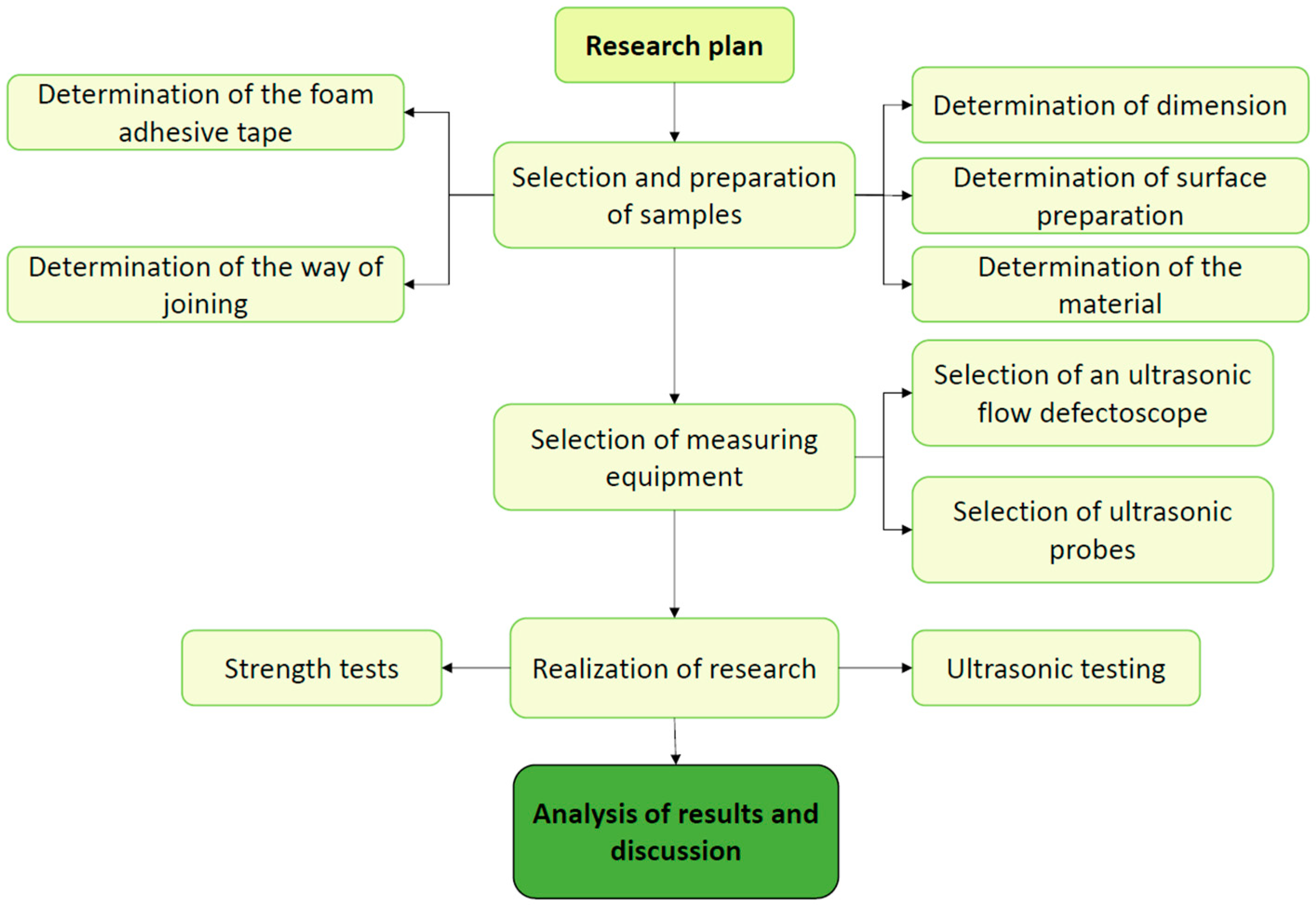

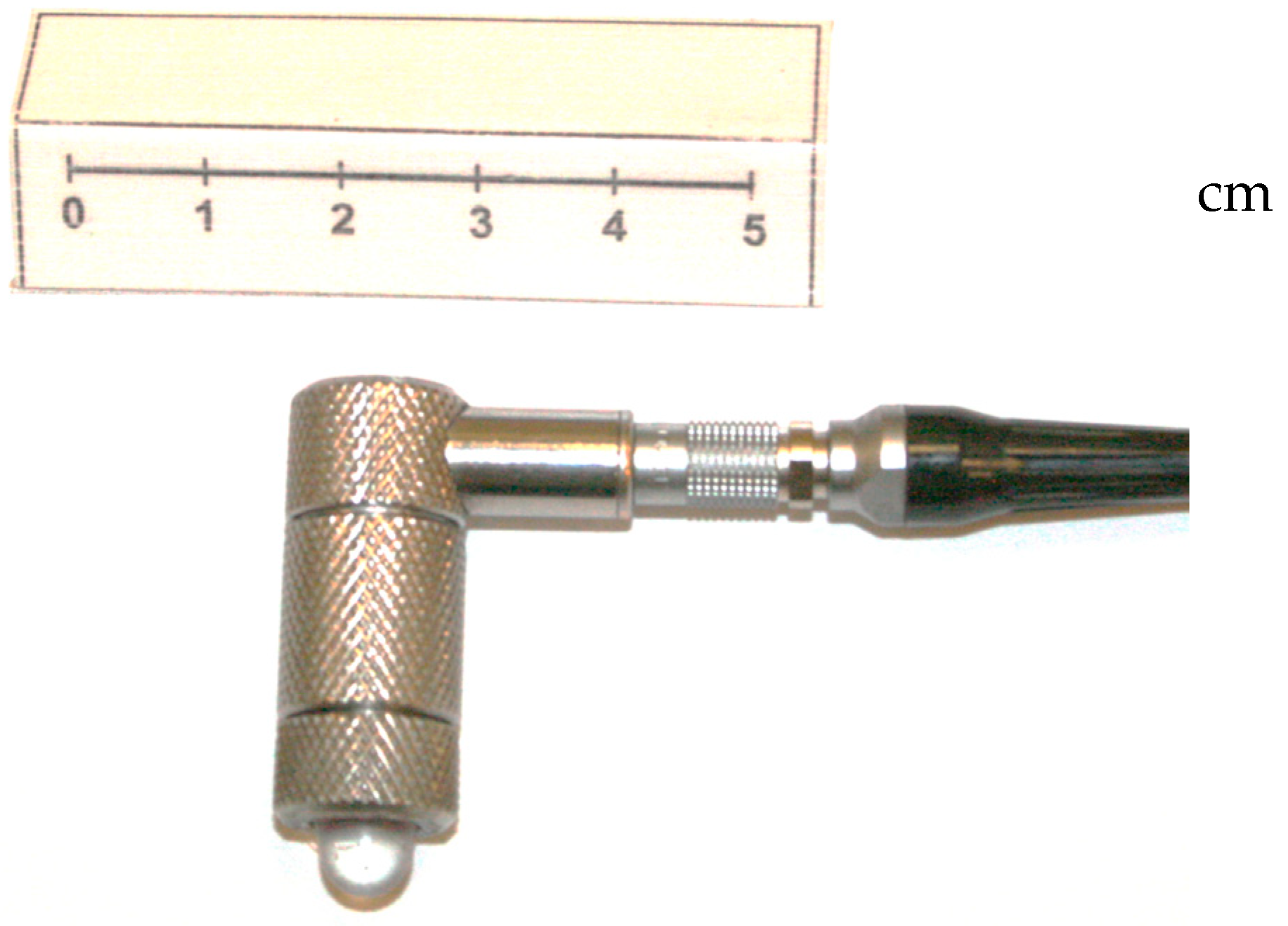

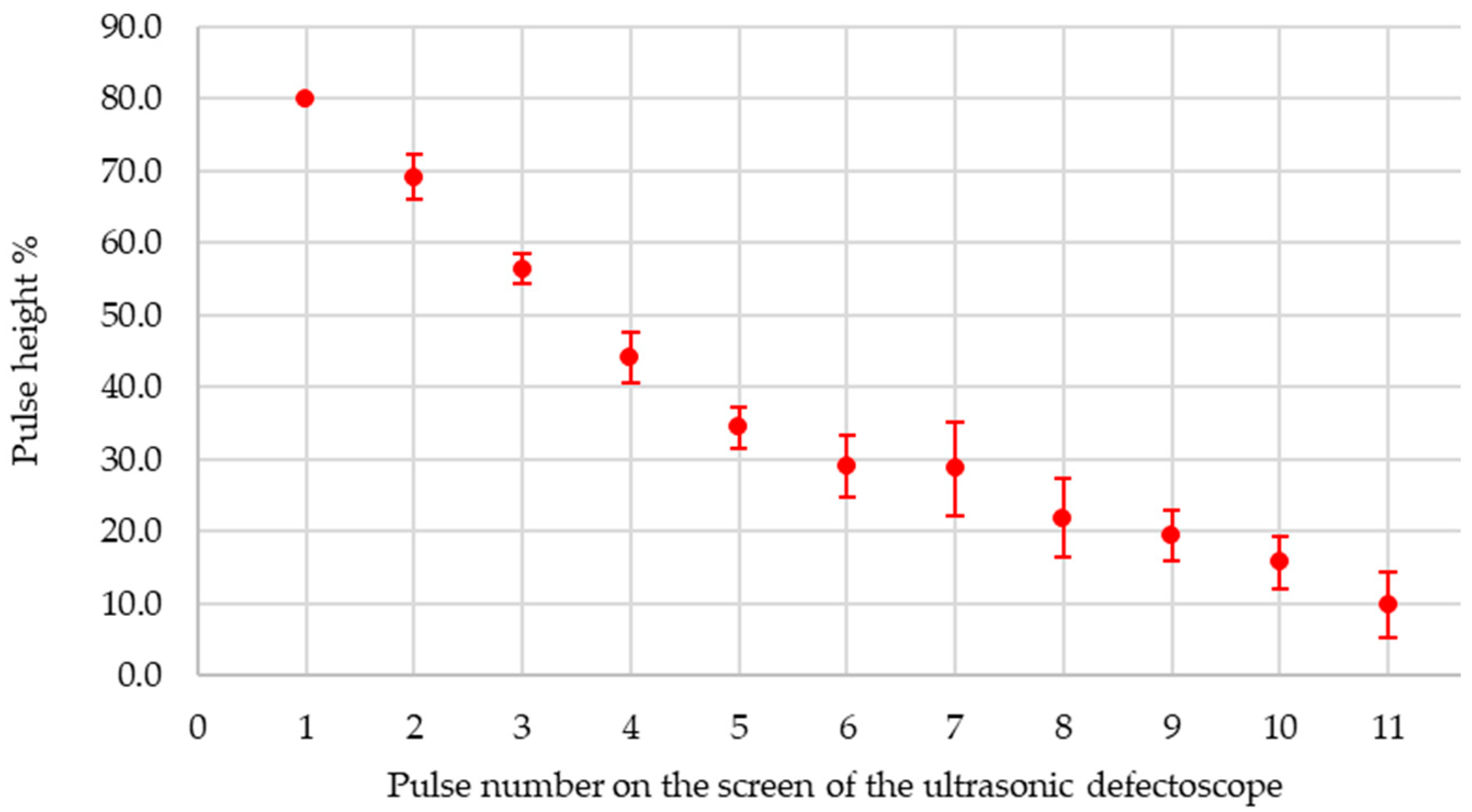
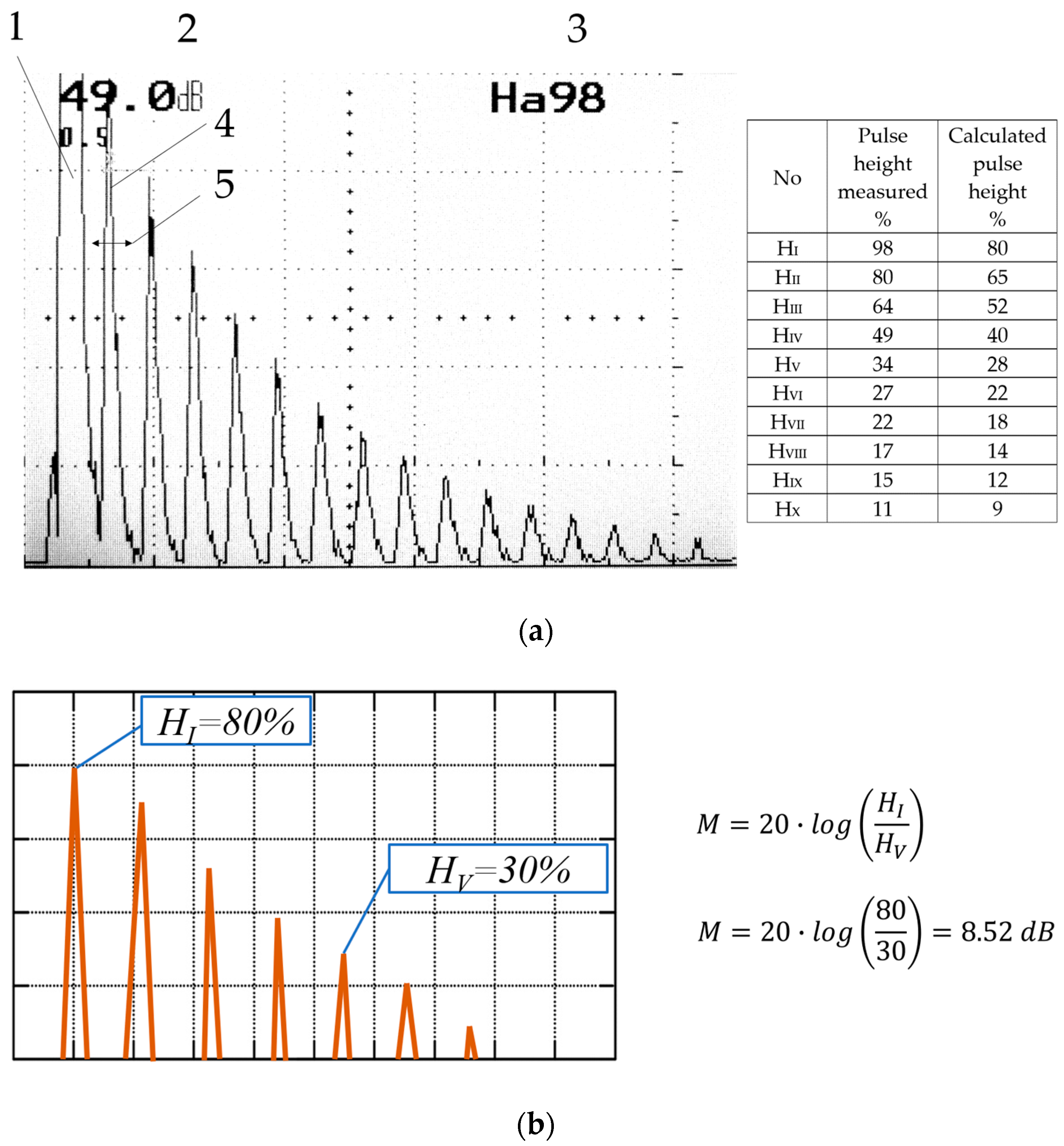
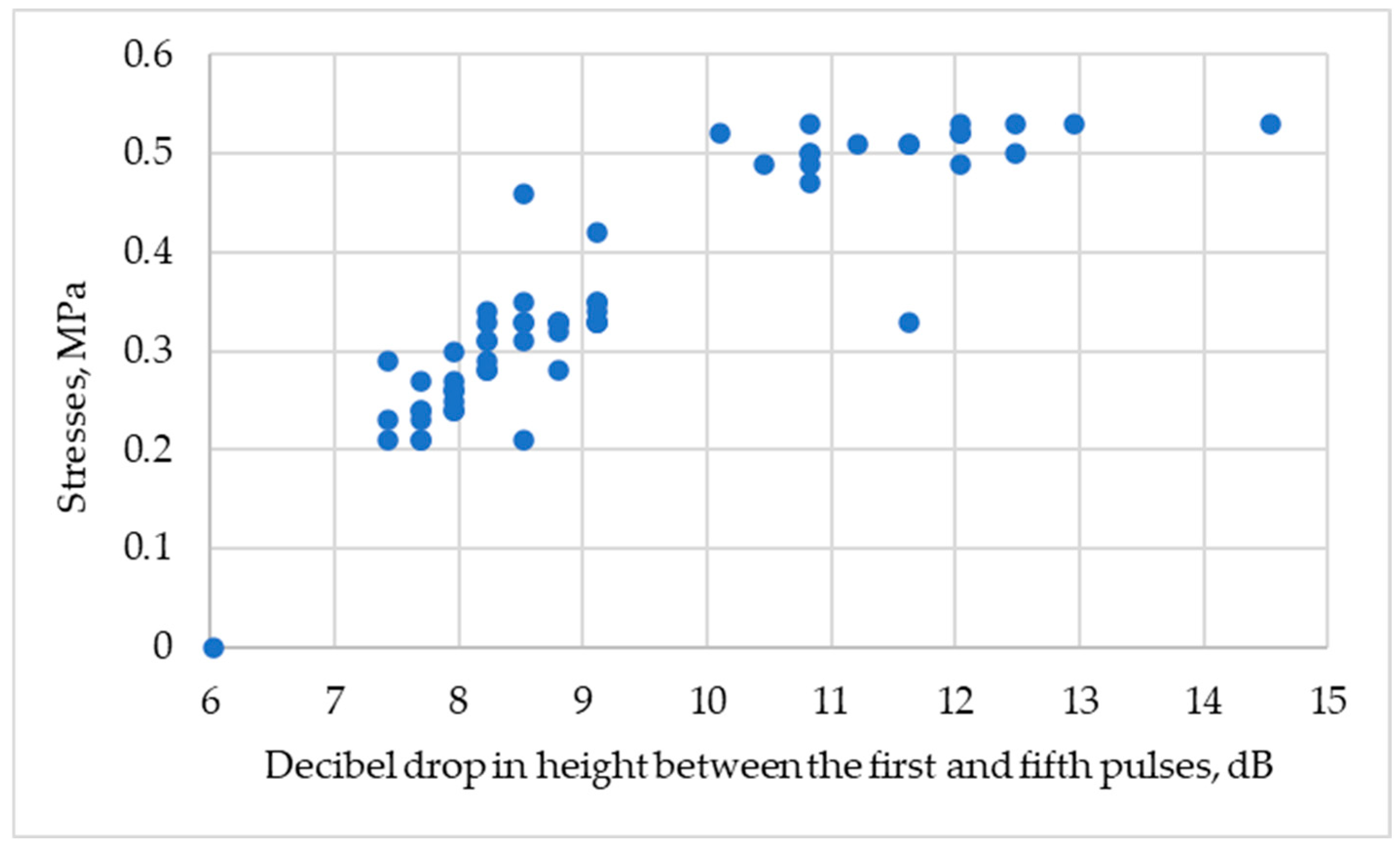
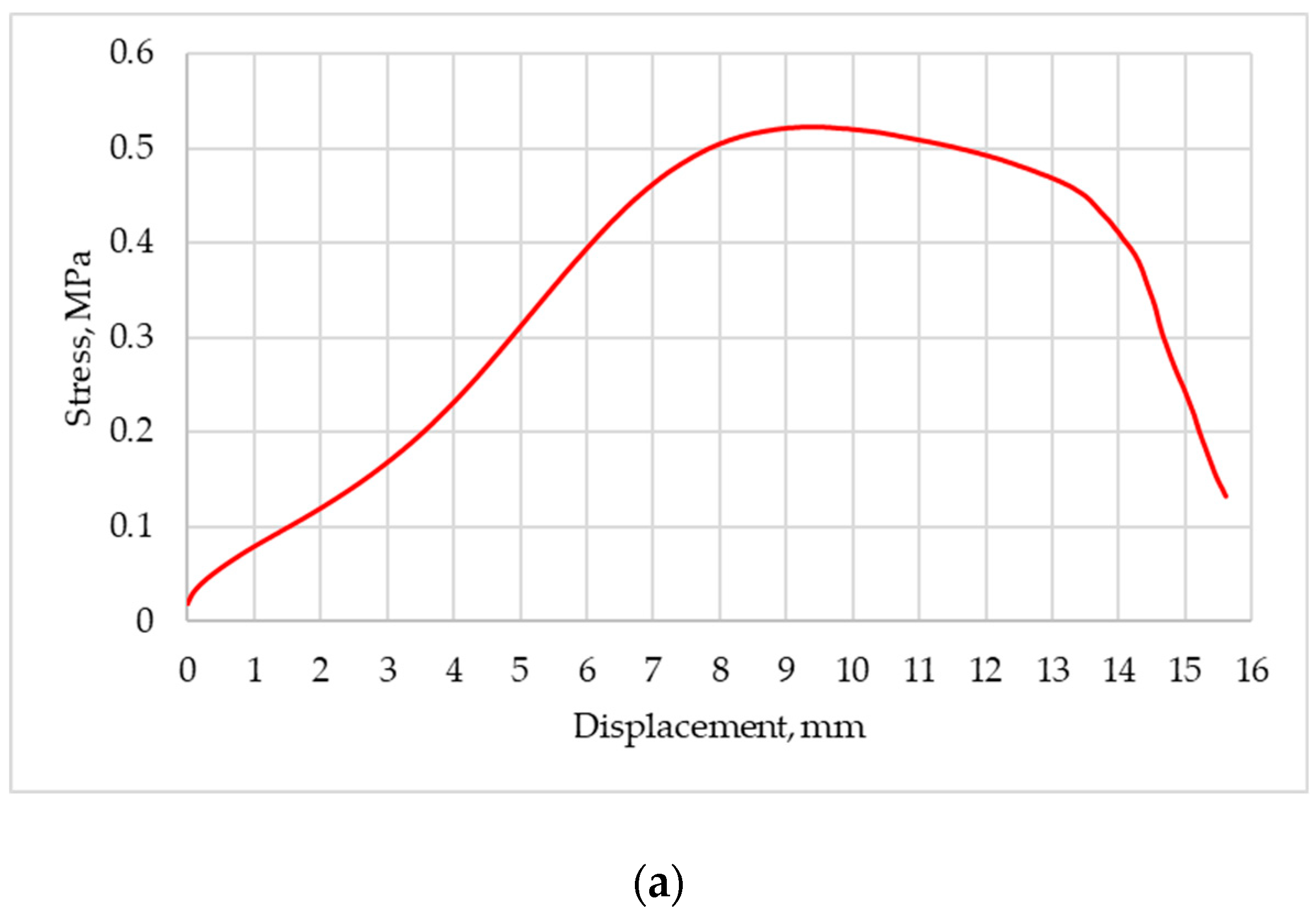
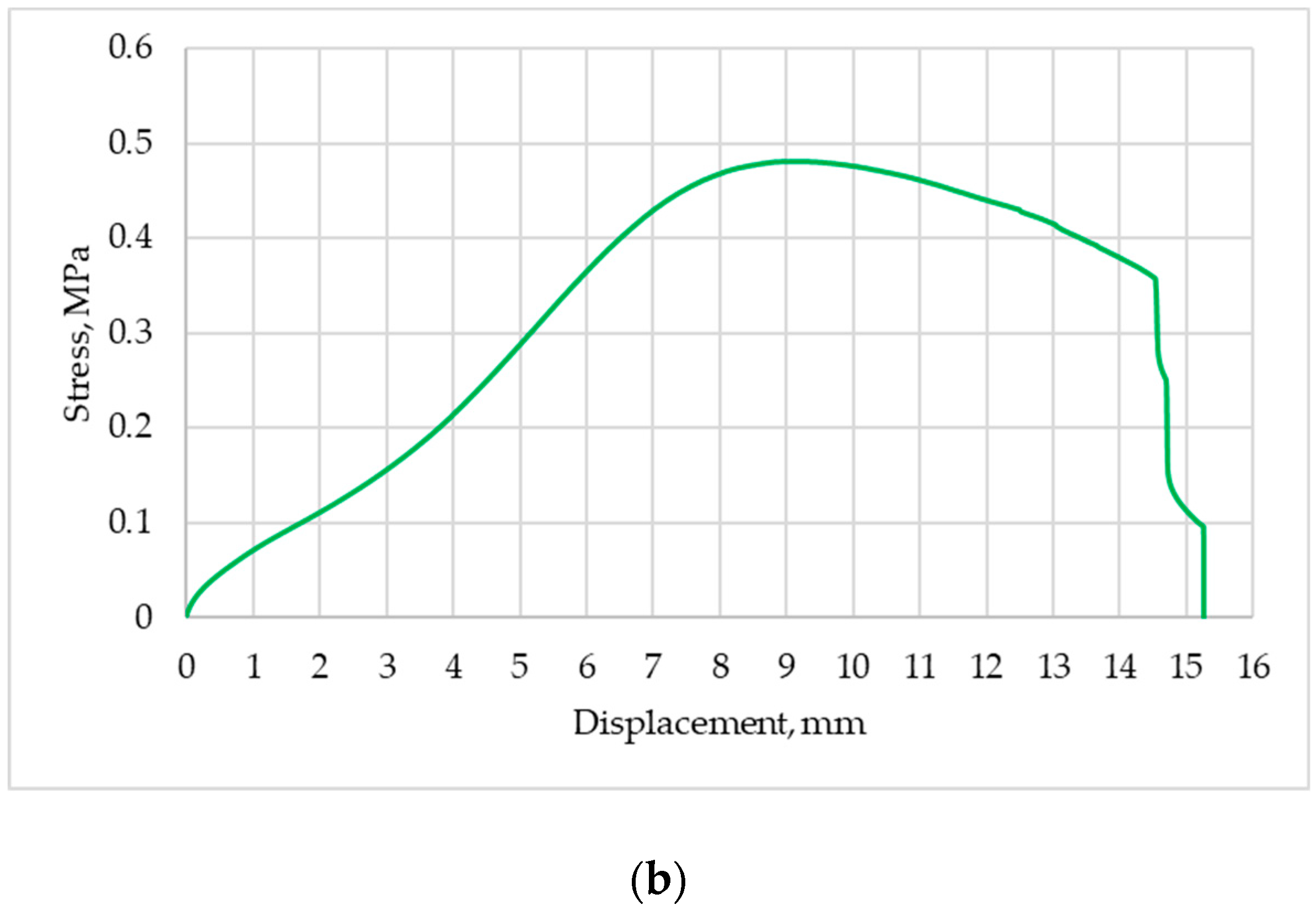
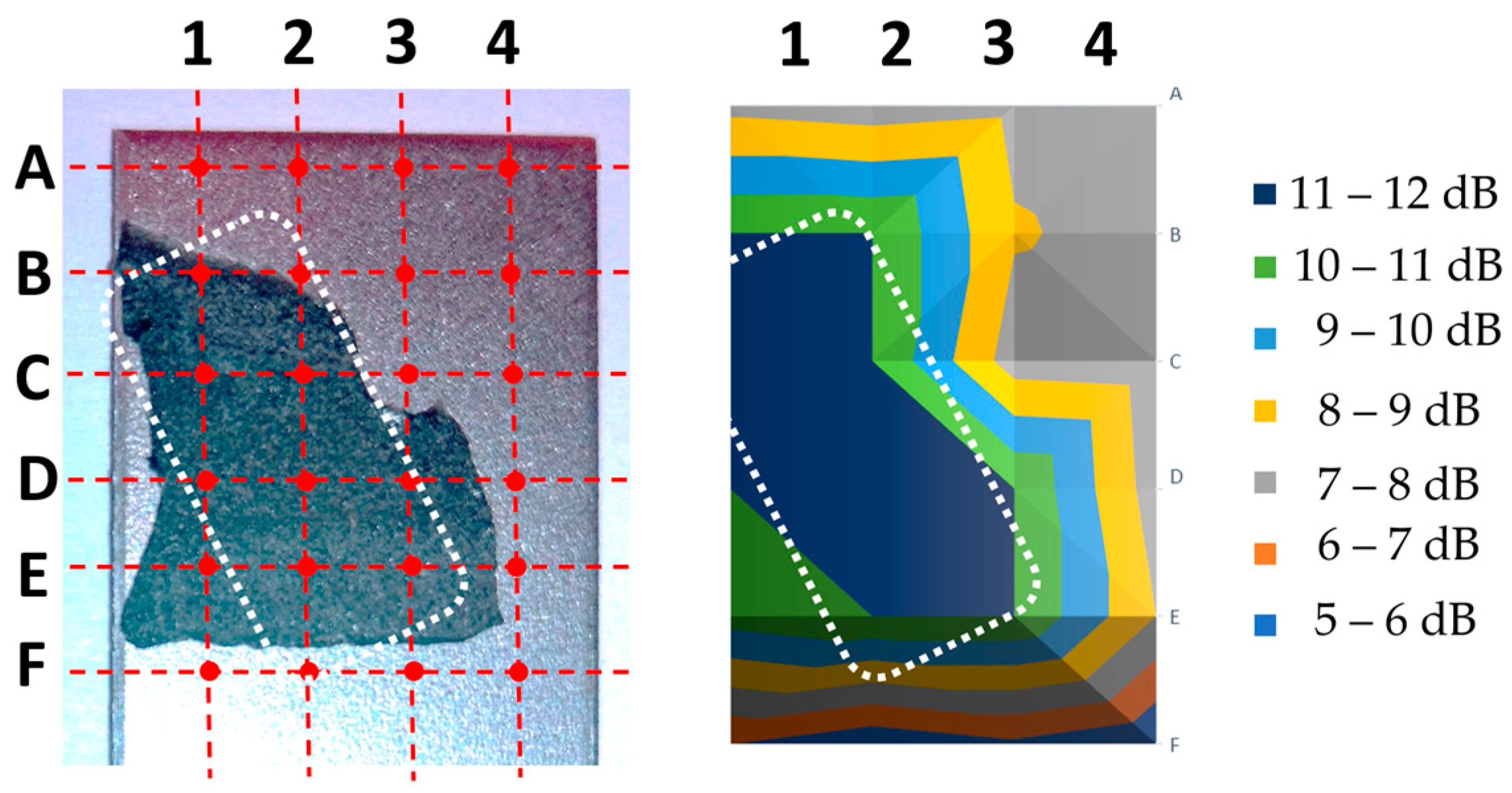
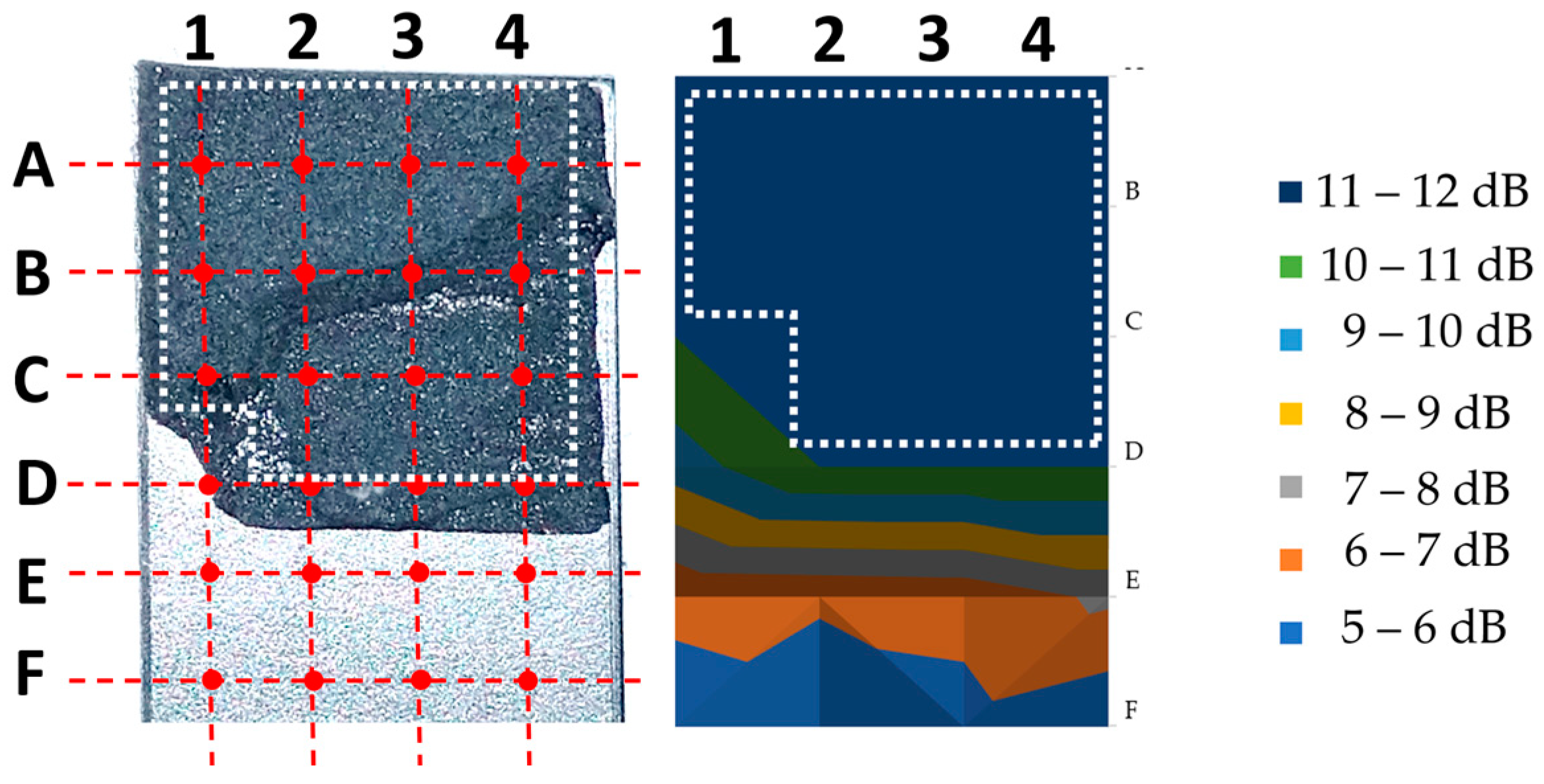
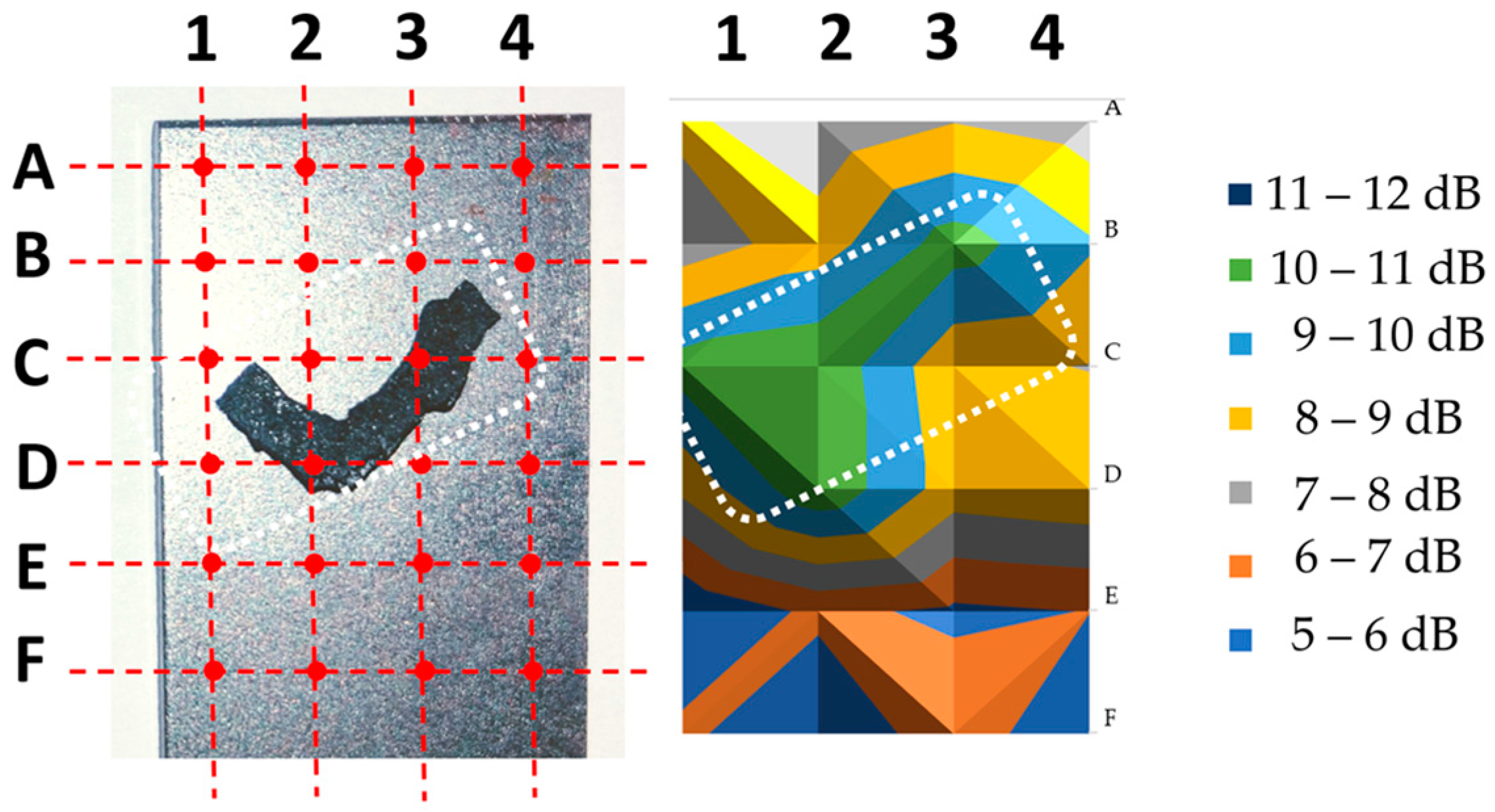
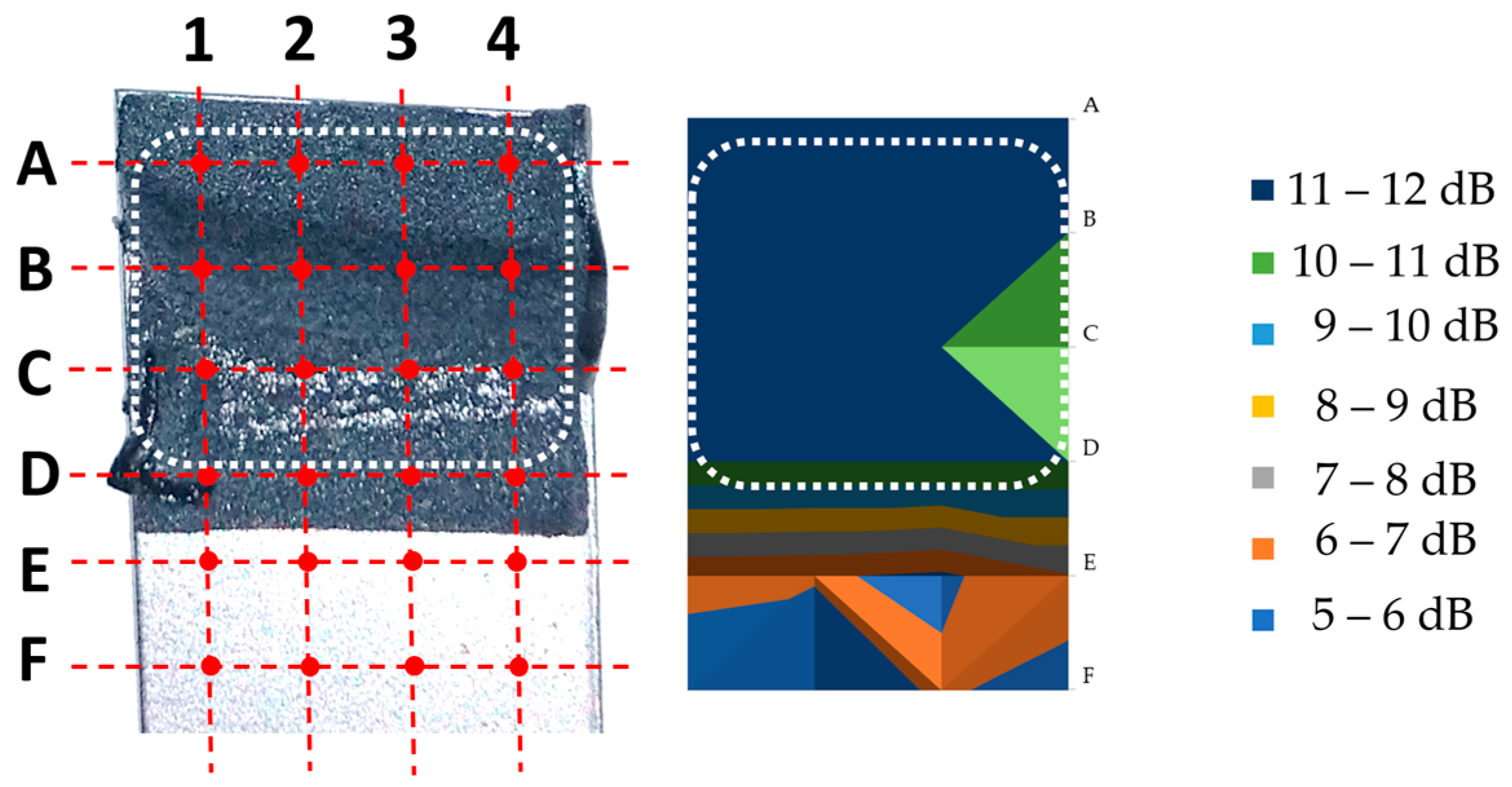
| Designation | Numerical Classification | C [%] | Mn [%]. | P [%] | S [%] | Si | Ti | Al | Nb |
|---|---|---|---|---|---|---|---|---|---|
| DC01 | 1.033 | ≤0.12 | ≤0.6 | ≤0.045 | ≤0.045 | - | - | - | - |
| Parameter | ||
|---|---|---|
| frequency | 20 | MHz |
| diameter of the transducer | 5.0 | mm |
| effective diameter | 4.5 | mm |
| wave speed of tested material | 5940 | m/s |
| wave length | 0.297 | mm |
| near field | 17.0 | mm |
| the coefficient of decrease of decibels K | 0.87 | - |
| sin the angle of divergence of the beam | 0.06 | - |
| divergence angle degrees | 3.29 | ° |
| distance from the transducer | 20 | mm |
| beam width | 2.3 | mm |
| Pulse Number | Average Pulse High | Standard Deviation | Confidence Interval | Percent Error |
|---|---|---|---|---|
| 1 | 80.0 | 0.00 | 0.00 | 0% |
| 2 | 69.2 | 1.55 | 3.17 | 5% |
| 3 | 56.4 | 1.05 | 2.16 | 4% |
| 4 | 44.1 | 1.77 | 3.61 | 8% |
| 5 | 34.5 | 1.41 | 2.88 | 8% |
| 6 | 29.1 | 2.12 | 4.35 | 15% |
| 7 | 28.7 | 3.14 | 6.42 | 22% |
| 8 | 21.9 | 2.63 | 5.38 | 25% |
| 9 | 19.5 | 1.73 | 3.53 | 18% |
| 10 | 15.7 | 1.81 | 3.69 | 23% |
| 11 | 9.8 | 2.21 | 4.51 | 46% |
| No. | HI % | HII % | HIII % | HIV % | HV % | M dB | Stresses MPa |
|---|---|---|---|---|---|---|---|
| 1 | 0.80 | 0.62 | 0.47 | 0.34 | 0.23 | 10.83 | 0.49 |
| 2 | 0.80 | 0.61 | 0.44 | 0.29 | 0.20 | 12.04 | 0.52 |
| 3 | 0.80 | 0.61 | 0.45 | 0.30 | 0.21 | 11.62 | 0.33 |
| 4 | 0.80 | 0.59 | 0.42 | 0.29 | 0.20 | 12.04 | 0.49 |
| 5 | 0.80 | 0.63 | 0.47 | 0.3 | 0.21 | 11.62 | 0.51 |
| 6 | 0.80 | 0.61 | 0.46 | 0.3 | 0.19 | 12.49 | 0.53 |
| 7 | 0.80 | 0.68 | 0.47 | 0.33 | 0.24 | 10.46 | 0.49 |
| 8 | 0.80 | 0.62 | 0.43 | 0.32 | 0.25 | 10.10 | 0.52 |
| 9 | 0.80 | 0.55 | 0.38 | 0.24 | 0.15 | 14.54 | 0.53 |
| 10 | 0.80 | 0.55 | 0.40 | 0.27 | 0.20 | 12.04 | 0.52 |
| 11 | 0.80 | 0.63 | 0.46 | 0.31 | 0.23 | 10.83 | 0.47 |
| 12 | 0.80 | 0.67 | 0.48 | 0.36 | 0.28 | 9.12 | 0.42 |
| 13 | 0.80 | 0.68 | 0.53 | 0.33 | 0.23 | 10.83 | 0.50 |
| 14 | 0.80 | 0.56 | 0.38 | 0.26 | 0.18 | 12.96 | 0.53 |
| 15 | 0.80 | 0.61 | 0.45 | 0.29 | 0.19 | 12.49 | 0.50 |
| 16 | 0.80 | 0.63 | 0.50 | 0.31 | 0.20 | 12.04 | 0.53 |
| 17 | 0.80 | 0.66 | 0.44 | 0.30 | 0.22 | 11.21 | 0.51 |
| 18 | 0.80 | 0.63 | 0.45 | 0.33 | 0.23 | 10.83 | 0.50 |
| 19 | 0.80 | 0.54 | 0.45 | 0.35 | 0.23 | 10.83 | 0.53 |
| 20 | 0.80 | 0.63 | 0.41 | 0.29 | 0.21 | 11.62 | 0.51 |
| No. | HI % | HII % | HIII % | HIV % | HV % | M dB | Stresses MPa |
|---|---|---|---|---|---|---|---|
| 1 | 0.80 | 0.69 | 0.48 | 0.38 | 0.30 | 8.52 | 0.46 |
| 2 | 0.80 | 0.69 | 0.47 | 0.39 | 0.28 | 9.12 | 0.33 |
| 3 | 0.80 | 0.62 | 0.53 | 0.39 | 0.30 | 8.52 | 0.31 |
| 4 | 0.80 | 0.71 | 0.53 | 0.42 | 0.28 | 9.12 | 0.33 |
| 5 | 0.80 | 0.66 | 0.48 | 0.42 | 0.28 | 9.12 | 0.34 |
| 6 | 0.80 | 0.61 | 0.53 | 0.37 | 0.30 | 8.52 | 0.35 |
| 7 | 0.80 | 0.67 | 0.47 | 0.41 | 0.30 | 8.52 | 0.33 |
| 8 | 0.80 | 0.66 | 0.47 | 0.41 | 0.28 | 9.12 | 0.35 |
| 9 | 0.80 | 0.64 | 0.48 | 0.37 | 0.29 | 8.81 | 0.32 |
| 10 | 0.80 | 0.64 | 0.48 | 0.37 | 0.29 | 8.81 | 0.33 |
| 11 | 0.80 | 0.68 | 0.52 | 0.37 | 0.32 | 7.96 | 0.30 |
| 12 | 0.80 | 0.63 | 0.52 | 0.38 | 0.29 | 8.81 | 0.33 |
| 13 | 0.80 | 0.63 | 0.47 | 0.38 | 0.28 | 9.12 | 0.35 |
| 14 | 0.80 | 0.66 | 0.46 | 0.40 | 0.29 | 8.81 | 0.28 |
| 15 | 0.80 | 0.65 | 0.46 | 0.38 | 0.31 | 8.23 | 0.31 |
| 16 | 0.80 | 0.69 | 0.47 | 0.38 | 0.29 | 8.81 | 0.33 |
| 17 | 0.80 | 0.70 | 0.49 | 0.40 | 0.31 | 8.23 | 0.34 |
| 18 | 0.80 | 0.60 | 0.53 | 0.41 | 0.31 | 8.23 | 0.31 |
| 19 | 0.80 | 0.61 | 0.51 | 0.39 | 0.30 | 8.52 | 0.33 |
| 20 | 0.80 | 0.67 | 0.50 | 0.39 | 0.28 | 9.12 | 0.33 |
| No. | HI % | HII % | HIII % | HIV % | HV % | M dB | Stresses MPa |
|---|---|---|---|---|---|---|---|
| 1 | 0.80 | 0.64 | 0.45 | 0.37 | 0.33 | 7.69 | 0.21 |
| 2 | 0.80 | 0.65 | 0.48 | 0.42 | 0.34 | 7.43 | 0.21 |
| 3 | 0.80 | 0.70 | 0.49 | 0.41 | 0.33 | 7.69 | 0.27 |
| 4 | 0.80 | 0.67 | 0.46 | 0.43 | 0.34 | 7.43 | 0.29 |
| 5 | 0.80 | 0.59 | 0.52 | 0.38 | 0.32 | 7.96 | 0.24 |
| 6 | 0.80 | 0.60 | 0.53 | 0.41 | 0.31 | 8.23 | 0.33 |
| 7 | 0.80 | 0.66 | 0.52 | 0.40 | 0.34 | 7.43 | 0.23 |
| 8 | 0.80 | 0.60 | 0.49 | 0.41 | 0.30 | 8.52 | 0.21 |
| 9 | 0.80 | 0.66 | 0.52 | 0.41 | 0.31 | 8.23 | 0.28 |
| 10 | 0.80 | 0.68 | 0.52 | 0.41 | 0.31 | 8.23 | 0.28 |
| 11 | 0.80 | 0.63 | 0.53 | 0.40 | 0.32 | 7.96 | 0.27 |
| 12 | 0.80 | 0.63 | 0.51 | 0.42 | 0.33 | 7.69 | 0.23 |
| 13 | 0.80 | 0.64 | 0.51 | 0.41 | 0.33 | 7.69 | 0.24 |
| 14 | 0.80 | 0.66 | 0.52 | 0.41 | 0.31 | 8.23 | 0.29 |
| 15 | 0.80 | 0.67 | 0.51 | 0.42 | 0.33 | 7.69 | 0.24 |
| 16 | 0.80 | 0.65 | 0.51 | 0.42 | 0.32 | 7.96 | 0.26 |
| 17 | 0.80 | 0.67 | 0.51 | 0.41 | 0.32 | 7.96 | 0.26 |
| 18 | 0.80 | 0.65 | 0.52 | 0.40 | 0.32 | 7.96 | 0.25 |
| 19 | 0.80 | 0.64 | 0.53 | 0.42 | 0.32 | 7.96 | 0.24 |
| 20 | 0.80 | 0.63 | 0.54 | 0.41 | 0.33 | 7.69 | 0.21 |
Disclaimer/Publisher’s Note: The statements, opinions and data contained in all publications are solely those of the individual author(s) and contributor(s) and not of MDPI and/or the editor(s). MDPI and/or the editor(s) disclaim responsibility for any injury to people or property resulting from any ideas, methods, instructions or products referred to in the content. |
© 2024 by the authors. Licensee MDPI, Basel, Switzerland. This article is an open access article distributed under the terms and conditions of the Creative Commons Attribution (CC BY) license (https://creativecommons.org/licenses/by/4.0/).
Share and Cite
Kowalczyk, J.; Jósko, M. Strength and Ultrasonic Testing of Acrylic Foam Adhesive Tape. Appl. Sci. 2024, 14, 6877. https://doi.org/10.3390/app14166877
Kowalczyk J, Jósko M. Strength and Ultrasonic Testing of Acrylic Foam Adhesive Tape. Applied Sciences. 2024; 14(16):6877. https://doi.org/10.3390/app14166877
Chicago/Turabian StyleKowalczyk, Jakub, and Marian Jósko. 2024. "Strength and Ultrasonic Testing of Acrylic Foam Adhesive Tape" Applied Sciences 14, no. 16: 6877. https://doi.org/10.3390/app14166877






